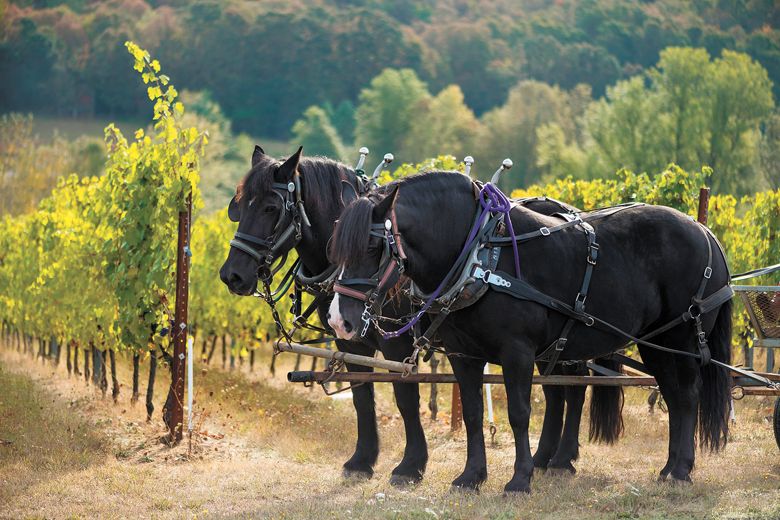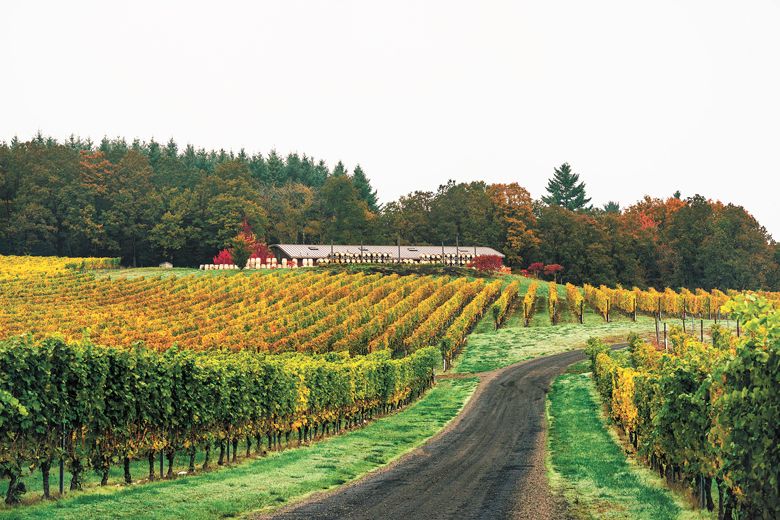Rooted in Ancient Soil
Mount Pisgah, Polk County, Oregon, becomes the state's 23rd AVA


By MICHELE FRANCISCO
Pardon me as I riff on the accurate comment spoken by Dorothy to her little dog in the movie Wizard of Oz, “Toto, I’ve a feeling we’re not in Missouri anymore.”
Oregon greeted a new wine appellation, recently approved by the Alcohol and Tobacco Tax and Trade Bureau, commonly known as the TTB. Named for a small mountain southwest of Salem, Mount Pisgah, Polk County, Oregon is a rather lengthy name for an AVA. While researching, I discovered the United States is liberally punctuated with Mt. Pisgahs, including three in Oregon, one just a couple hours’ drive away in Lane County. The original petition listed simply ‘Mount Pisgah.’ However, hoping to avoid possible consumer confusion with other mountains and counties, the TTB proposed a longer, more descriptive title.
Named by Missourian Colonel Cornelius Gilliam as a tribute to a mountain sharing the same name near his childhood home, Mount Pisgah, Polk County, Oregon is our state’s newest, and third smallest AVA. Wholly within the larger Willamette Valley appellation, the TTB agreed with the proposal petitioners that the 5,850-acre mountain has unique features distinguishing it from the surrounding area.
Brad Ford, owner of Illahe Vineyards, explains, “Many names of local features were discussed, but the mountain was the best unifying geographic feature to describe the grape-growing area.” Thus, the mountain itself defines the appellation boundaries, with elevations between 260-835 feet. Because it rises above the valley floor, the vineyards planted within its borders are better protected from spring and fall frost.
The soil is marine sediment above ancient Siletz rock. Open Claim Vineyards comprises one of just nine vineyards within the new AVA. Owner Brett Wall explains, “Among the distinctions is the geological feature of the Siletz River volcanics parent material which provides a special character to the wines produced from the fruit grown in this area.” In fact, the new AVA claims the oldest soils in the Willamette Valley.
Because of its southern location, Mt. Pisgah isn’t directly affected by the cool ocean air funneling through the Van Duzer Corridor wind gap. The taller Coast Range Mountains to the west also protect from strong winds. “The AVA is situated in the foothills of the Coast Range... in an ‘eddy’ within a river of coastal winds,” says WildAire co-founder and winemaker Matt Driscoll, who has worked with fruit from the region since 2008. With an average wind speed of mere 2.3 mph, neighboring Salem is far windier, with its average speed over 6 mph. Strong winds can damage growing grapevines, as happens in both the Van Duzer and Eola-Amity AVAs.
“After making wine from six vineyards in the Van Duzer Corridor appellation along with four on Mt. Pisgah, I better understand what sets them apart from the larger landscape,” explains Bryan Croft, winemaker for Rainstorm Winery. “The most important feature in both grape growing areas is wind. The first leans into it with a notable surplus. The latter, tucked in around the corner, is perfectly distanced from the perpetually breezy Corridor, while also buffered from the winds over the Luckiamute Valley by Fishback Hill to the south.”
Temperature remains another differentiating factor after soil and wind speed. With a total of 2,543 average growing degree days between 2014-16, Mt. Pisgah is significantly cooler than Salem, with an average of 2,903 days during the same timeframe. These averages can be considered high since all three growing seasons were warmer than usual.
Ford, along with Croft and Freedom Hill Vineyard’s Dan and Helen Dusschee, originally discussed developing an AVA in 2014. A larger cohort met in 2016, the final petition was perfected in October 2017.
When asked how the Mt. Pisgah terroir is reflected in the finished wines, Scenic Valley Farms winemaker Gabriel Jagle explains, “I have worked with Pinot Noir from Ash Creek and Illahe Vineyards, and they are distinctly different from others in the Willamette Valley. The lower temperatures and higher elevation allow for lower sugar levels and higher acidity, resulting in wines that are fresh and vibrant– even in the warmest vintages.”
Ancient soils also influence the grapevines and subsequent fruit. Jagle continues, “The unique Siletz River Volcanic soils contribute a dark earthiness to the Pinot Noir that cannot be found anywhere else within the valley.” Ford adds, “These clay soils, the reduced Van Duzer winds and the warmth of the hills tend to create darker, more tannic skins. After working with four vineyards and tasting nearly all the wine from the new AVA, I can say with confidence that we’re growing excellent wine grapes on the mountain.” Ford’s 80-acre Illahe Vineyard property runs down the south side of Mt. Pisgah, and he is extremely familiar with the area’s distinctive wine characteristics.
I believe Don Lange, founder of Lange Estate Winery & Vineyards, sums it up best. “Our family winery has been creating wines from Freedom Hill Vineyards, located within the Mt. Pisgah sub-appellation, since the late 1980s. After a few years of discovery, we were convinced that the unique characteristics of the Freedom Hill wines were profound and sufficiently commanding to merit single-vineyard designation on our labels, a position that has endured to this day. They are among the most distinctive wines made in Oregon and, by turns, some of the most distinctive wines in the world, year after year.”










